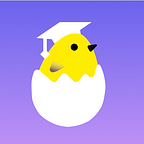There is a sort of magic that happens when people come together, whether this is a chance encounter, an unexpected conversation, or even just forming a bond with someone over small talk. It is in these moments that perhaps some of the greatest ideas are hatched, which is why the academic community capitalize on networking events and conferences in hopes of potentially capturing lightning in a bottle. But in a world that has been ravaged by the pandemic, the opportunities for researchers to connect with each other has dwindled considerably. How can we keep ingenuity and innovation flowing when the environment has changed so drastically? And is it even possible to recreate such instances like those experienced in-person in a virtual space?
It is undeniable that there are many pros to being able to work virtually. It has liberated workforces from the daily commute, opened up opportunities for remote hirings in other provinces or states, and can connect more people together because the limitations of travel are simply not there. Our company, Dataraction, was able to increase our team by 340% last year, and several of our employees live hours away from what would be the home office, while others live in different provinces or countries. It has allowed for diverse opinions, we can tackle problems from different perspectives, as new insights challenge what we thought we once knew. However, there are definitely drawbacks to working remotely across a team of 20+ employees, things that we as a team sorely miss. Though we are as connected as ever, to the point where we can bring our team members into our very homes via computer screens, there is an undeniable fact that scheduled meetings tend to be hyper-focused, and once a person is finished a meeting, they are essentially disconnected from everyone else, working in solitude. What was great about working in an office space was the “acts of randomness” that seemed to always without us even realizing it. People from different departments can gather at lunchtime, or in the hallways, sharing little bits of information and problem solve with each other, looking at things from a different perspective. The marketing lead may not know the first thing about coding, but they can provide a wealth of knowledge to a developer who is designing a new feature since they always know what is trending. And despite there being obviously planned, cross-team meetings, you just don’t always get the same type of ingenious moments when it is forced out of you.
(Caption) The team, the last meeting before the holidays, smiles abound.
Contrivance, in this case, is the enemy. Stifling effective knowledge sharing that can then be turned into actionable results.
Researcher Jacqueline Ng Lane believes that these random encounters are the key to everything. She wants to know if it is possible to “engineer serendipity”, particularly among those who have a similar knowledge base. “Our study indicates that even brief, information-rich encounters at conferences can benefit knowledge production, with the potential to alter people’s research directions and collaboration networks”, is one of the conclusions reached in her recently-published paper, “Engineering serendipity: When does knowledge-sharing lead to knowledge production?”. The data doesn’t lie, and Lane’s research suggests that these in-person encounters are defacto more effective when it comes to knowledge transformation, (with varying degrees of effectiveness depending on if interacting parties are from the same field or not) and it is very hard to replicate them virtually. So where does that leave us now?
At her recent research seminar on DotsLive, (in partnership with Tsinghua University’s Tsien Engineering Excellence Program), Lane fielded many questions about this very concern from her audience of peers, all wondering how they could better effectively create opportunities for these “serendipitous encounters”. Lane herself believes that you cannot reproduce the same results you would find in a conference virtually, for that spontaneity can never quite be the same, but you can definitely try. Virtual hangouts, lunch breaks, and randomized zoom breakout rooms can perhaps be an apt substitute for now, as these methods inspire chance encounters among peers. These can be employed both at conferences and the workplace itself, and they really should.
(Caption) a slide from Lane’s seminar given on January 22nd. She goes into detail about the nature of a conference and the importance of diverse serendipitous encounters.
Even within our ever-growing team, we realize the importance of “water cooler conversations” that can lead to the spark of an idea or provide a solution to a challenge. It also just brings us closer together, building trust that we rely on heavily once milestones begin to approach. Lane’s ongoing research showed the positive outcomes of virtual water coolers, and how it immediately improved the performance and socialization of newcomer employees, even with just 30-minute sessions. It is uplifting to know that even these makeshift efforts can leave a lasting impact, for it is sometimes hard to really know.
(Caption) A study Lane and team conducted on the weekly performance of interns after 30-minute daily water cooler sessions over a period of 5 weeks. There is definitely a significant difference after these sessions are introduced.
That is why “engineering serendipity” as Lane calls it, has truly become a priority for our platform DotsLive, and it is why our next rollout of features is going to support researchers looking to collaborate and create connections with each other while also increasing the visibility of their work. We cannot wait to show you what else DotsLive has to offer!
To watch the full playback of Lane’s amazing seminar, click here, and learn more about how knowledge sharing leads to collaboration and ultimately, knowledge diffusion.
For more amazing seminars, panels, and conferences, sign up to DotsLive and join the growing community today!
This article was written by
Victoria Spano (@victoria_anne_spano)
| Marketing Communications Specialist | Dataraction
Follow our Instagram: @dotswhatcommunity
